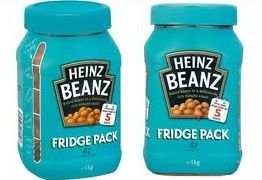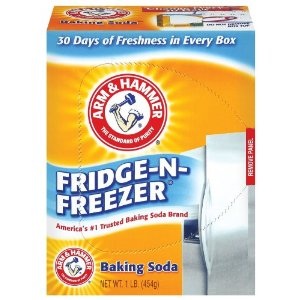Who wants to be hidden away in the dark recesses of a cupboard? Brands want to bask in the spot lit world of the fridge. It is clearly a lighter, brighter environment with greater frequency of use.
Commonsense dictates that people open their fridges more frequently than their food cupboards. In fact I’m sure some obscure university somewhere has charted the precise difference in frequency of usage and has a formula with which to calculate it. I’m happy to rely on experience.
It is also perceived as a more premium environment. Anything from the supermarket chiller commands a higher price and has a halo of healthiness, whether or not it is warranted. Think Sunny Delight. The most successful brand launch of the 1990s, the original formulation was a diabolical concoction of a little juice, a lot of water, some corn syrup, vegetable oil and other additives that make you recoil in horror.
The fridge is dynamic; it is the place to be. The pantry is the past and tins are not terribly happening. While reports of their death seem somewhat premature, tomatoes are in tetrapaks and beans can come in those inspired little snap-pots. Despite developing creative packaging solutions as a means of making the food cupboard a sexier environment, the cooler is cooler.

Step forward Heinz, the doyenne of haricots verts a la sauce tomate. Baked beans were synonymous with tins. Now Heinz Baked Beanz are in the fridge, front and centre, thanks to the recent launch of a 1kg screw top jar specifically designed to fit on the average fridge shelf.
And if other brands’ experiences are anything to go by, it will go gangbusters.

Baking soda giant Arm & Hammer had a major problem. Americans had stopped baking and sales fell. Nothing short of reinvention was required. Baking soda has always been an effective cleaning product, but the critical insight was that it absorbs odours. The brand repackaged itself as a fridge deodoriser and bang: sales exploded as practically every fridge in the US became home to the little yellow box. Like the Heinz jar, which has a clear strip to how much is left, Arm & Hammer’s pack has a replacement indicator. It all but screams: “buy me” and has become a staple product in American homes.

Coca Cola’s slim line, shelf-friendly 12-pack is another brilliant piece of packaging. The cans practically dispense themselves as they simply roll out in to the paw and then the maw of the thirsty teenager. You can almost hear them yelling: “MUUUUUUM there’s only one left.”
And if it is good enough for Coke, it is usually good enough for the rest of us. So what will be next to flee the fusty cupboard and make it into the light? And what can be done to up the glamorise those left behind?
We think we might just have the answer, but more of that later.
About the Author
Chris Hart is Creative Director at Blue Marlin, Bath. His favourite projects span global spirits brands and small-scale artisan products, from Smirnoff and Johnnie Walker to Hiho and Pukka Pies.
